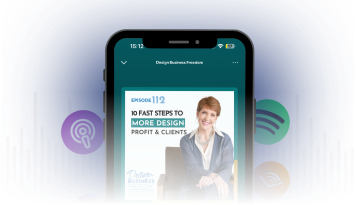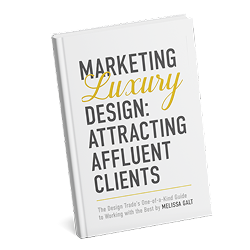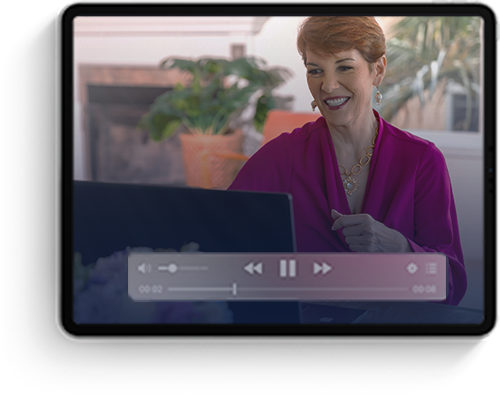How to Deliver a 5-Star Interior Design Experience
How to Elevate Every Step of the Interior Design Journey From Discovery to Delivery
In the world of high-end interior design, beauty alone isn’t enough. Stunning interiors may get the attention, but it’s the client experience that earns loyalty, referrals, and repeat projects. And yet, too many interior designers focus all their energy on aesthetics while ignoring the journey that gets a client from interest to installation.
That journey is your Client Experience Map, a strategic framework that turns your creative talent into a scalable, profitable business. When you master the process behind your portfolio, you create a business that runs smoother, earns more, and leaves your clients raving.
Let’s walk through the six essential stages of a well-designed Client Experience Map and how each one sets you apart in a crowded industry.
1. Discovery: Set the Tone From the Start
This isn’t the engagement. It’s the first dance.
Many designers overcomplicate the inquiry process with endless forms and exhausting detail. A discovery call is not the time to demand an 11-page questionnaire. Instead, create a seamless, polished first interaction that communicates your professionalism and warmth.
Be prepared. Have a clean, branded Zoom background (no blur, no mystery). Know your questions. And be clear about next steps. Always present your process as exciting and exclusive.
You can offer a Feasibility Package that delivers the numbers and clarity they crave when it’s a remodel or a new build. This is between $2550 for a report you turn in a couple of weeks, to $25K that you turn in 60 days, or $90K that one client turned in 3 months.
For furnishing-only projects, offer a Style & Comfort Assessment, which outlines the scope without giving away your full vision. These aren’t freebies. They are paid entry points that build trust and position you as the expert guide they’ve been searching for.
2. Proposal & Agreement: Build Trust Through Clarity
Your proposal is more than numbers. It’s your opportunity to showcase leadership and earn buy-in.
Always present live, whether on Zoom, in person, or via Loom with your face visible. Walk through the scope, fees, and timeline with confidence and transparency. Don’t read every line, but do highlight each clause headline and clarify expectations.
Frame your agreement as a partnership, not a transaction. And be ready for questions. When clients see your process, they see your value and they stop turning to their cousin or neighbor for design advice.
3. Onboarding: Create a Welcome They’ll Never Forget
This is where excitement and structure come together.
Send a thoughtful welcome package. Collect a signed expectations document that outlines not simply what they can expect from you, but what you expect from them. Use this moment to assert your communication boundaries, especially if you’re a text-free practice or only respond during set hours to protect creative time.
Create a guidebook that maps their journey with you, step by step. Biweekly project updates (even during long wait times) eliminate frustration and uncertainty. Better yet, kick off with a launch event complete with signage, festive bites, and bubbly. You’re building anticipation and reinforcing the high-touch experience they invested in.
4. Design & Presentation: Lead With a Clear Vision
Your clients hired you for clarity, not chaos.
Present one strong concept with confidence. For larger homes or multi-phase projects, break presentations into digestible parts. Avoid visual overwhelm by sequencing design phases: finishes, fixtures, floor plans, then furnishings.
One solid option, one backup if necessary. That’s it. Clients who want to see ten sofas are looking for validation, not vision. And they’re not the clients who value your leadership.
Rein in revisions, implement change orders before expanding scope (or as I call it, profit expansion), and always use agendas so clients know what decisions are expected in each meeting.
Outsource technical work like Computer Aided Design, renderings, and even as-builts. You were hired for your creative genius, not your software skills.
5. Procurement & Project Management: Protect Your Sanity With Systems
This is where many interior designers burn out. Don’t.
Have a dedicated team member or an outsourced partner manage procurement. It’s time-intensive, and it’s not where your highest value lies. Track every order. Communicate proactively. Charge appropriately.
And never bring a problem to your client without at least one to three thoughtful solutions. You’re not just managing logistics, you’re preserving the magic of the experience.
6. Delivery & Styling: Craft a Moment They’ll Never Forget
This is your grand reveal, and it should feel like one.
Deliver joyfully, with surprise elements that delight. Think champagne and chocolates in the bedroom, custom robes in the bath, and a beautifully bound book of the design journey on the coffee table.
Provide care instructions in both English and Spanish. Record their reaction if you have permission. These moments make powerful marketing assets, and schedule an Interior Celebration if it’s part of your agreement.. Invite guests who your client has provided,, toast your client, and walk everyone through the project’s special touches.
Seven to fourteen days later, follow up with a debrief. Ask what they loved, what could be better, and what they’d say to a future client. That’s your next testimonial.
Stay in touch. Because when you’ve mapped the entire journey with care, your clients won’t just remember the result, they’ll remember how you made them feel.
Is Your Client Experience Map as Polished as Your Portfolio?
You already have the design talent. But if you want a business that scales without burnout, your process needs to be just as remarkable as your projects.
When every step is intentional (from inquiry to install), you build loyalty, increase referrals, and free yourself from the daily chaos that keeps too many designers stuck in survival mode.
Ask yourself: where in your current experience do clients feel unsure, overwhelmed, or underwhelmed?
That’s where your next level of growth is hiding.
When you’re ready to leap to the luxury level in your processes, your presentation, and your profitability. GET IN TOUCH. I can help.





